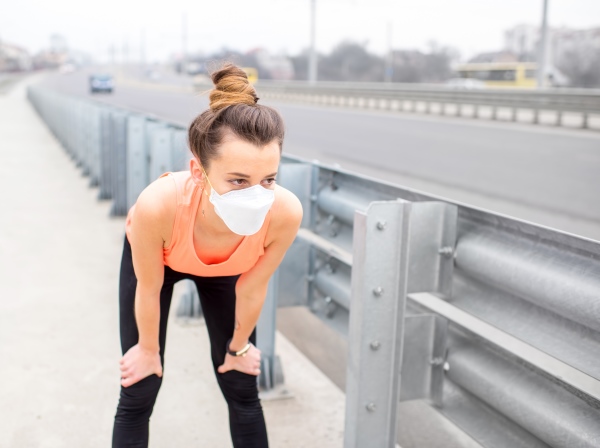Cosmetic chemist Terri Vinson explains how pollution is damaging your clients’ skin – and what you can do about it.
Airborne pollution is an increasing worldwide concern. Environmental pollution is a major cause of premature ageing to those living in the urban jungle.
According to emerging scientific research, the effects of pollution are also directly linked to chronic skin conditions such as eczema. Thankfully new scientific breakthroughs have resulted in cosmeceuticals that are able to directly block cellular pollution damage.
A staggering 54 per cent of humans live in urban cities. We are constantly challenged by CO2 emissions, car exhaust, cigarette smoke, smog and heavy metal pollution. All these generate free radicals. This has a direct impact on the cells and compromises the protective barrier function of the skin.
Urban pollution is not just a problem limited to China or India; it is prevalent wherever a dense urban concentration exists. Even so called ‘clean’ outer suburban areas are subjected to particles being distributed by the wind. The main culprit of airborne pollution is particulate matter (aka PM2.5). This is defined as fine particles and droplets with a diameter less than 2.5 microns (0.0025 mm). These particles accumulate to form smog, that haze we see hovering over the horizons of city skylines. Although PM2.5 is too large to penetrate skin, it does cause damage of the surface barrier resulting in dehydration, sensitivity, uneven skin tone, dullness, acne and premature ageing. Other forms of pollution include hydrocarbons, heavy metals and airborne free radical molecules.
Prof Jean Krutmann, director at the Leibniz Research Institute for Environmental Medicine in Germany, states: “UV damage was really the topic in skin protection for the last 20-30 years. Now I think air pollution has the potential to keep us busy for the next few decades. At least for the pigment spots on the cheeks, it seems air pollution is the major driver.”
“Pollution breaks down collagen and the lipid layer in the skin, which impairs skin barrier functions,” says Zoe Draelos, M.D., consulting professor of dermatology at Duke University in Durham, North Carolina, and author of the Journal of Cosmetic Dermatology article ‘Aging in a Polluted World’.
Airborne pollution particles affect numerous pathways of inflammation on the skin resulting in activation of melanocytes causing hyperpigmentation, dilated blood vessels resulting in redness and potentially rosacea and excess cell damage causing chronic inflammation. This ultimately results in collagen breakdown, free radical damage and visible ageing.
It has also been discovered that niacinamide is particularly effective in reducing skin damage caused by pollution. There is also evidence to suggest that excessive clinical skin peels and overusing of scrubs can disrupt the surface layer making it more susceptible to environmental aggressors.
Mineral makeup containing high levels of zinc oxide and iron oxide pigments also play an important role in protecting the skin barrier from UV, infrared solar radiation and pollution damage.
A new cosmeceutical ingredient, alteromonas ferment extract, produced by marine microbes, is able to directly combat the effects of environmental pollution on the skin surface. This ingredient is biomimetic with human cells and is a natural shield to urban pollution. It acts on four levels:
- By forming an a surface film to prevent adhesion of fine pollution particles
- By forming an invisible mesh to entrap these particles thus preventing and reducing cell damage.
- By binding to reactive toxic heavy metals in the air (lead arsenic, mercury and cadmium) rendering them neutral and harmless to the skin
- By reducing free radical destruction to cells produced by airborne pollutants
Pollution is not a trend; it is a reality that must be addressed. We are all aware of the impact of environmental pollution on our planet and resources, but we must also realise the effect, both short and long term, it has on our skin ‒ the largest body organ. Fortunately, pollution damage to the skin can be addressed by innovative technology and new cosmeceutical ingredients that are backed by clinical data.
Biological chemist Terri Vinson (Bsc.DipFormChem ASCC) is the founder of cosmeceutical brand, Synergie Skin. Contact www.synergieskin.com

